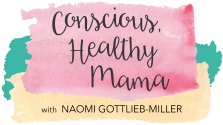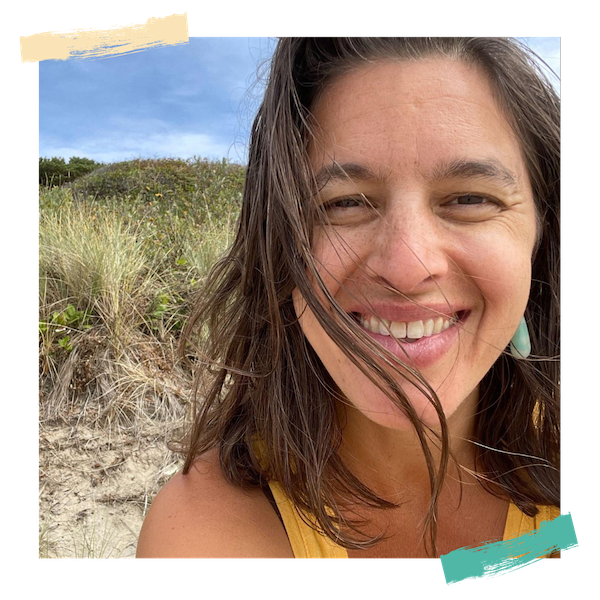Every parent thinks that their kid is the most brilliant kid ever.
The thing is that Milly really is the most brilliant kid ever.
At 3 years old, she communicates using complete and clear sentences. She can put on her own shoes, although she occasionally gets the feet mixed up. She can open the freezer to grab frozen bananas, which is her current favorite snack. When she wants to turn the light on in the playroom, she drags over a chair, climbs up, and flips the switch. She can count to 50 and remembers songs she’s heard on the radio well enough to scream-sing the chorus on repeat for hours. She knows which button turns the TV on, which we’re slightly less enthusiastic about, but it’s an impressive skill nonetheless.
My 3 year old is clearly a genius.
As a result, we tend to expect a lot more of her than she is actually capable of and we sometimes get a little frustrated when she can’t do the things we want her to be able to do.
(When will she learn to wipe her own butt? Seriously. I am looking forward to that childhood breakthrough).
Raising my children to be independent and self-sufficient is something that is really important to me. I want my kids to grow up with the knowledge that they can do anything they set their minds and their actions towards. Maybe this comes from my own prejudice as a highly independent kid and now adult, but I also think that knowing I could tackle big challenges on my own and succeed has been hugely empowering. I want my own kids to feel that same sense of empowerment.
Independence doesn’t emerge from the ether, though.
Independence is a learned skill.
And how do we learn it?
We’re taught first how to ask for and receive support when we are stuck, unsure, or just plain scared. I’ve taught this idea for years as a yoga teacher when teaching handstand.
Sure some people can handstand naturally. They fling themselves up at the wall or even in the middle of the room and ask, “you mean like this?” It’s a little awesome and a little annoying, but it’s also rare.
Most people need to be taught how to do a handstand because most of us don’t spend hours a day standing on our hands.
When I first teach handstand, I teach the basic actions required of the legs, arms, and core. Then I have my students pair up and help their partners into handstand. Some people are totally freaked out to not only do handstand themselves, but also to be responsible for another person. In the long run, though, this partnering is what makes them stronger. When we support one another, we are invested in someone else’s success as much as our own.
I have my students work with partners for a while before I have them try a handstand solo at the wall. Many can eventually get up into a handstand, although for some it takes longer than that first try. For some people it takes months or even years to finally get up into a handstand, but often they do IF they begin to independently practice handstand outside of their weekly yoga class. The more they translate what they’ve learned in community, with support, the more success they will have on their own.
This is also why I run my Conscious Healthy Mama programs as a group experience. Each participant chooses an accountability buddy – someone who will support them throughout the program, perhaps even beyond. Much like the partner handstand, the mama buddies become as invested in their partners success as much as their own because they care about the person they are working with.
Knowing that someone is rooting for you and going through the same things you are can make the difference between creating a healthier routine and falling back into the same less healthy patterns you’ve been stuck in for a long time.
Support helps people feel more successful, especially when they are feeling unsteady or unsure. It gives them the confidence to challenge themselves when they feel ready. And support gives us the ability to feel as though we can try those harder things on our own.
We learn independence through support.
Interesting.
I will continue to encourage my daughter to climb the rope ladders at the park and even the chain link backstops on the field at the playground. The latter will require more help. That’s ok. I don’t mind helping. I want her to know she can count on me to help her when she does feel unsure or unsteady.
Even if she asks for help doing something she’s done easily for a long time, I will remember that she is 3, not 10. She is still my baby. She will always be my baby. I never want her to think otherwise.
I will still push her a little bit. I’ll teach her the steps she needs to take in order to be able to do more and more on her own. Her preference right now is to do everything on her own anyway. I mean just a week ago, she needed me to take the pits out of her cherries. Now, she is a cherry-pitting pro.
She’d rather climb into her carseat on her own and buckle herself in, than let me do it. And she can. And still on some days she asks me to help her into her carseat. Independence is not all or nothing with Milly or with most kids.
I think we can all learn a bit from kids, who strive to be independent but are still willing to ask for help in learning how to do something new or when they are feeling vulnerable.
This is the ultimate benefit of receiving support from a person or from a group of people: The strength from support gives us a strong foundation so we can be ourselves, do what we want, and accomplish our big goals whether it is in relationship, yoga, or daily self-care.
Maybe kids knows this intuitively and we unlearn it as adults.
Or maybe kids haven’t yet learned pride and fear of failure.
Either way, my suggestions for embracing your inner kid are these:
1. Pick your moments.
There are times when you know you can accomplish something big and challenging on your own, so go for it. There are other times when you might need back up. Or you might need to learn the basics. Or you might just be nervous and need some emotional support. Don’t be a lone wolf in those moments.
If you’re not ready to do a handstand solo, but want to learn how, find a teacher or a friend or a workshop (ps…I am teaching one in August at Blue Heron. Stay tuned!) to give you the instruction, support, and encouragement you need.
When you’re ready, that foundation will be there for you.
2. Find your posse.
Or your peeps. Or your tribe. Whatever you want to call them, lean into them. We are stronger together. And even when you decide you can do something big on your own, you know you have the support of your posse/peeps/tribe even when you are acting solo. Because when you have a strong network of support, you are never acting solo.
For me, I find this both in real life, but also on my facebook page and instagram page. When I share mom moments, especially ones that are difficult, my big extended network backs me up.
I also do have people I can call one-on-one, which I value too. But in a pinch, social media is a great place to connect and create support.
3. Collaborate.
It’s not just about being supported but offering support. When we collaborate with one another, we create the space for mutual support to grow. When we support and encourage others, we benefit by realizing that we sometimes need support and encouragement, too.
I’ve noticed this the most in watching people partner in handstands. Most people are big cheerleaders for their partners but not for themselves. When someone sees that their partner is struggling or succeeding, it mirrors what happens within themselves.
This is similar within the coaching programs I do. When you collaborate with an accountability buddy, you tend to first value more what your buddy is doing or needs support in. It’s when we see ourselves in our friends, buddies, and partners, we have a greater opportunity to grow.
I could write more about this topic. I’ve written about it before. I’m going to leave it here today, though. There’s so much to say. What I will offer is simply that it is a fine line to walk between self-sufficiency and support. All we can do is try to navigate that divide as skillfully as possible in order to learn from every step we take along the way.





